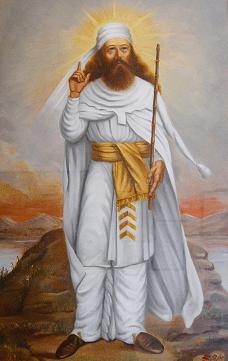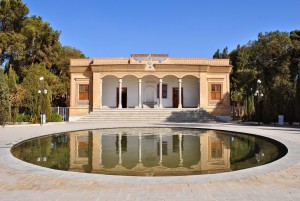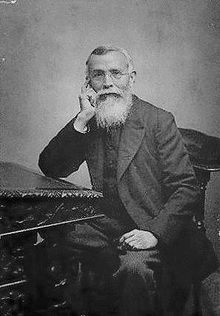(based substantially on an article written by Fali S. Chothia)
Who are the Zoroastrians?
Zoroastrians are the descendants of the Proto-Indo-Iranian group of people, who in turn are descendants of the Indo-European family of nations. The Proto-Indo-Iranian group lived on the southern steppes of Russia called Airyanem Vaejah (present-day Kazakhstan, Uzbekistan, and Kyrgyzstan), and began their migration westward towards Europe and southward towards the Indian subcontinent sometime between 8000 B.C. and 6000 B.C. During this migration, the ancestors of the Iranian and Indian Aryans separated, moving to present-day Iran (Aryana) and Northern India, respectively. Due to their ancestry, these groups shared a strong background and similarity of language, customs, beliefs, values and cultures, which over time have evolved and taken shape separately.
Over time, Zoroastrianism became the state religion of the mighty Persian empire – which at one time extended from Africa to China, from the Danube River in Europe to the plains of Judea in the Middle East, and up to Punjab and Sindh in India. Today, its followers number less than 200,000 worldwide. After the fall of the last Persian dynasty in the seventh century A.D. to the invading tribes from the Arabian Peninsula, several small groups of Zoroastrians moved to escape the proselytization and forced conversion to Islam. These groups sought refuge in isolated areas of Iran or fled to India, China, present-day Afghanistan and Russia, and other countries.
One of the largest surviving groups of Zoroastrians is to be found in India where its members are known as the Parsees. Another large population still resides in Iran. There are sizable groups in the U.S.A., Canada, Britain, and Pakistan; and smaller ones in Hong Kong, Singapore, Sri Lanka, Australia, East Africa and other places. A few Zoroastrians can be found in almost all English-speaking countries and even in some non English-speaking countries.
Who was Zarathushtra?
 Zarathushtra was born in Iran, probably in the region that is now part of present-day Russia or Afghanistan. He was married and had children. His father was Pourushaspa and his mother was Dughdova. Long before the coming of Zarathushtra, the people of what is present-day Iran followed the “Mazdayasni” religion, one characterized by the worship of multiple deities. This caused a great distress to Zarathushtra. To seek a message from Ahura Mazda (God), he withdrew himself from the material world at an early age and spent several years in solitude. When he knew that he had heard the voice of God, he set out to preach. For ten years no one paid any heed to him; in fact, he was denounced as a heretic and sorcerer. This changed when he was received by King Vishtasp. So impressed was the King by Zarathushtra’s message that he publicly embraced the new religion, which then spread rapidly throughout the region. The success of the new religion was not liked by his opponents who by slander and deception succeeded in having him imprisoned on a charge of sorcery. Undaunted, he continued to spread his faith after his release from prison. His enemies, however, continued to persecute him. He died at the age of seventy-seven, at the hands of one of his enemies while praying in a temple.
Zarathushtra was born in Iran, probably in the region that is now part of present-day Russia or Afghanistan. He was married and had children. His father was Pourushaspa and his mother was Dughdova. Long before the coming of Zarathushtra, the people of what is present-day Iran followed the “Mazdayasni” religion, one characterized by the worship of multiple deities. This caused a great distress to Zarathushtra. To seek a message from Ahura Mazda (God), he withdrew himself from the material world at an early age and spent several years in solitude. When he knew that he had heard the voice of God, he set out to preach. For ten years no one paid any heed to him; in fact, he was denounced as a heretic and sorcerer. This changed when he was received by King Vishtasp. So impressed was the King by Zarathushtra’s message that he publicly embraced the new religion, which then spread rapidly throughout the region. The success of the new religion was not liked by his opponents who by slander and deception succeeded in having him imprisoned on a charge of sorcery. Undaunted, he continued to spread his faith after his release from prison. His enemies, however, continued to persecute him. He died at the age of seventy-seven, at the hands of one of his enemies while praying in a temple.
There is some controversy about the time when Zarathushtra lived. Scholars today believe that he lived around 1500 B.C. or even earlier. This would make Zoroastrianism the oldest of the prophetic religions.
What are the principal teachings of Zarathushtra?
According to Zarathushtra, the world is a battleground between the forces of good and evil. Ultimately, good will prevail over evil. The mission in life is to conduct oneself in such a manner that this ultimate victory is achieved. He urged his followers to live a full and useful life in this world, to appreciate all things that are good and beautiful in creation, not only to do good and desist from evil but also to fight evil, and to make others happy. He assured his followers that the strength of God would be given to those who fought evil, and stressed that an evil deed could be offset by a good one. As for happiness, the way to seek happiness was by making others happy.
He pointed out that in each of us there is a divine spark. It is up to us to recognize this divine spark or essence within us, to understand its capabilities and to try and so conduct ourselves that we reach the state of perfection in this world. As a practical guide for daily life, his prescription was simple:
- Think good thoughts.
- Speak good words.
- Do good deeds.
Zarathushtra emphasized free choice. In one his first sermons he preached: “Ye who seek knowledge, please listen carefully to what I say, and perceive the truth in the light of reason, because it is possible for each man to have a separate creed.”
He also taught that one should be liberal in thinking and to respect all that is good, true and beautiful: “We reserve and love all good thoughts, words and deeds that may have been presented here or elsewhere, now or at any future period, because we are on the side of goodness.”
Some scholars believe that some of the important concepts found in other religions – such as the concepts of monotheism, of heaven and hell, of the end of the world, of the resurrection of the dead, and of the coming of the Savior – originated with Zoroastrianism.
What are the most important Zoroastrian values?
Truth. Zoroastrianism stresses truth more than anything else. Man is equipped through mental consciousness to discern truth from falsehood, and has the free will to choose between right and wrong. The very first prayer a Zoroastrian child learns is devoted to truth. A free translation of that prayer – called Ashem Vohu – is: “Truth is the greatest virtue. It is happiness. Happy is who is truthful for the sake of truth”.
Charity. In the very second prayer a Zoroastrian child learns – the “Yatha Ahu Vairyo” – there is a line which says: “He who give assistance to the poor acknowledges the kingdom of God.”
Purity. Zoroastrianism puts value on purity – of both the body and the mind.
Dignity of labor. Hard work and the dignity of labor are emphasized in Zoroastrianism. In the Gathas, which are a record of the prophet’s conversations with Ahura Mazda, Zarathushtra asks “What is the way of furthering the Mazdayasni religion?” and Ahura Mazda replies “Incessant cultivation of corn, O Spitama Zarathushtra. Who cultivates corn cultivates righteousness.”
What are the sacred books of the Zoroastrians?
All the existing scriptures propounded by Zarathushtra as well as the religious writings of his followers are collectively known as the Avesta (this is not to be confused with Avestan, which is the name of a language spoken in Persia at one time). The Avesta consists of two parts – an older Avesta and the later Avesta (or Khordeh Avesta). Today, the Avesta is written in a number of languages.
The most important part of the scriptures is the Gathas or Divine Songs. These are dialogues between the prophet and Ahura Mazda, and they are ascribed to Zarathushtra himself. The Gathas are part of the Yasna, the oldest Zoroastrian scripture. The Gathas were written in a language that was Pre-Avestan. Later scriptures were written in the Avesta language, and in the Pahlavi and Pazand dialects.
What exists today is only a fraction of the original scriptures, many of which were burned when Alexander destroyed Persepolis, the ceremonial capital of the Persian Empire.
Zoroastrians still recite their prayers in the language in which the scriptures were written.
Do Zoroastrians believe in one God?
They do. Some scholars claim that Zarathushtra was the first prophet to preach monotheism, the concept of one God. There is a mistaken belief that Zoroastrians believe in two Gods – a God of good and a God of evil. This is not true. In fact, Zarathushtra talked about two opposing forces – the forces of good personified by Hormuzd and the forces of evil personified by Ahriman. According to Zarathushtra the forces of good will ultimately prevail over the forces of evil, and the purpose of life is to help this process.
Do they believe in life after death?
They do. Besides one day in each month, the last ten days of the Zoroastrian calendar are set aside for remembering the dead. There is also a special day each year when the departed are supposed to visit the earth. This corresponds to the All Souls Day observed by Christians. It is also believed that the soul hovers over the dead body for three days after death.
Do they believe in heaven or hell?
They do. In the Gathas, Zarathushtra often refers to life after death and to the Chinwat Bridge where the good deeds done on earth are weighed against the evil deeds. Many Zoroastrian scholars believe that the descriptions of heaven and hell in Zoroastrian scriptures are purely allegorical, that heaven and hell are not places but conditions. Some Zoroastrians believe that the reward or punishment for good or bad deeds is often given in this world itself rather than in the next.
Do they believe in reincarnation?
Few scholars have found any evidence of this belief in Zoroastrian scriptures.
Do they believe in the coming of the Final Savior?
They do. Some scholars believe that the concept of the Final Savior originated with Zoroastrianism.
What is the Zoroastrian view of the nature of human beings?
Zoroastrians do not believe that human beings are born in sin. They believe that there is potential for good as well as evil in every human being. There is a divine spark or essence in each of us. We should recognize it and utilize it to its fullest potential. This divine spark (known as one’s Fravashi or Farohar) is depicted in architecture as a bird with outstretched wings.
Are Zoroastrians “fire worshippers”?

No, they are not. They do not worship fire. The fire is a symbol of the Zoroastrian faith just as the cross is a symbol of Christianity. In a Zoroastrian temple, the only symbol before which prayers are said is the fire which is tended by a Mobed (priest) five times a day. The fire stands for a number of things. It is a symbol of purity, for fire purifies everything. It also stands for the “inner fire” or divine spark in a human being. The fire burning in the Zoroastrian temple or at home is a constant reminder that we should always keep our “inner fire” alive.
There are three grades of temples, depending upon the process of consecration and who is allowed to tend the fire. The first and second grades of fire can only be tended by Mobeds, whereas the last can be tended even by laymen.
Are there any other symbols of faith?
There are two symbols that Zoroastrians wear. One is the sudreh, a white, muslin shirt. In the center of the front neck opening of this shirt, a small symbolic pocket is stitched into which all good deeds are believed to be inserted. This shirt serves as a daily reminder that one must perform good deeds. The garment’s color is white because white represents purity.
The other symbol is the kusti, a sacred thread tied three times around the waist while saying one’s prayers. It is tied three times to remind one of the three basic principles of the faith – good thoughts, good words, good deeds. The kusti is woven out of 72 threads of sheep’s wool. These threads symbolize the 72 chapters of the scriptures, called the Yasna, which include the Gathas.
The first time a Zoroastrian wears the sudreh and kusti is when he or she is formally inducted into the faith, usually between the ages of 7 and 11.
What is the Navjote or Sudreh Pushi ceremony?
Navjote or Sudreh Pushi is the name of the ceremony during which a Zoroastrian child is formally initiated into the religion. In India, it is usually performed between the ages of 7 and 11. Tradition says it should be an odd number, and the ceremony must be done before the onset of puberty. For Zoroastrians in and from Iran, the age requirement is more relaxed and this ceremony can often be seen occurring when the child is a teenager.
After a bath (to signify purity of body), the boy or girl is made to wear the sudreh for the first time. After a short prayer, he or she then ties the kusti around the waist. During the ceremony, the child recites a few simple prayers, receives benedictions from the priest, and declares his or her acceptance of the Zoroastrian religion in the following words (freely translated):
“I follow the Mazdayasni religion, the religion of Zarathushtra. I love and accept this religion. I love and accept the very mind of good thought. I love and accept the very utterance of the good word. I love and accept the very action of the good deed. I love and accept the good and true Mazdayasni religion which stops all quarrels and wars, teaches us to die for others, and leads us to Asha, the truth of God. The Mazdayasni religion is for me the greatest, the best and the finest of all religions which are or which shall be, because it is God’s religion shown to us by Zarathushtra. I believe all things good come from Ahura Mazda. Such are the boons of those who follow the Mazdayasni religion”.
What are some of the notable historical achievements of Zoroastrians?

During the Achaemenian period (550 B.C. to 330 B.C.) of the Persian Empire, Cyrus the Great united all of West Asia into a vast empire. He is also remembered for his sense of justice, his humane treatment of conquered people, and his respect for other religions which were allowed to flourish in his empire. The Jews in particular have a high regard for Cyrus, who is mentioned several times in the Bible. After conquering Babylon in 538 B.C., he freed the captive Jews and allowed them to return to Jerusalem and rebuild their temple. For this act, he was proclaimed “Anointed of the Lord” in the Old Testament Book of Ezra and Book of Esther.
Under Darius the Great, son-in-law to Cyrus, the Persian Empire reached its zenith, extending from Africa to China, from the Danube River in Europe to Judaea in the Middle East, and up to Punjab and Sindh in India. Darius was not only a skilled warrior, but he was also a very able administrator and a great builder. He is believed to be the first emperor in history to divide his empire into a number of provinces, each ruled over by a governor, a general, and a secretary of state, each of whom was appointed directly from the capital and was independent of the others. As a builder, Darius constructed a canal linking Iran with the Mediterranean and a 1500-mile royal road from Sardis to his capital at Susa, and built many palaces and cities including Persepolis which was later destroyed by Alexander.
In India, J.N. Tata, a Parsee Zoroastrian and founder of the House of Tata, is known as India’s leading industrialist. Among other institutions, he established the first steel mill in India, the first technological teaching and research institute, the first airline, the first school of social work, the first cancer hospital, the first institute for nuclear research. The Parsis are also the pioneers of the textile and shipbuilding industries in India.
Zoroastrians also played a prominent part in India’s fight for freedom. Zoroastrians such as Dadabhai Naoroji, Pherozeshaw Mehta, Dinshaw Wacha and K.F. Nariman, are among those who made a very significant contribution to the struggle for independence.
